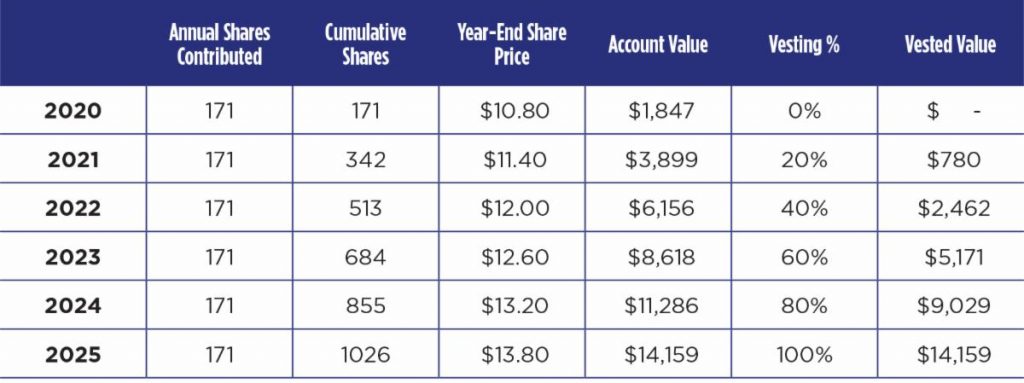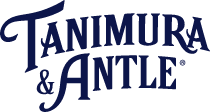4. All About ESOP Vesting
In our first few communications, we learned about the Basics of an ESOP and Eligibility. This week, we will be learning about Vesting. The Company highly values its employees and their choice to invest their time and effort as part of the Tanimura & Antle family. Providing the additional benefit of Employee Ownership is a way for us to compensate our employees beyond the wages they receive for their loyalty in years of service.
What does vesting mean? How long do I have to wait to be fully vested?
Vesting is the process that compensates employees who continue their years of service and defines how long an employee must work for our company before owning the full amount of their shares. An employee becomes fully vested—meaning, fully owns their shares—after six years of Credited Service from when they first became eligible to participate in the ESOP. If you missed the communication on eligibility, click here Participant and Plan Year Eligibility.
Vesting Schedule
The schedule below outlines the percentage of your shares that you own leading up to your sixth year of Credited Service, when you own 100% of your ESOP shares. Credited Service is the number of Plan Years that a participant is credited with at least 1,000 Hours of Service.

Let’s look at Marissa’s example again.
Marissa began working for the Company in 2019 and became eligible for the ESOP in 2020. She had 1,350 credited hours of service for the 2020 Plan Year. In July of 2021, Marissa received her first annual statement, and it shows she received 171 shares for the 2020 Company Annual Contribution. Her statement also tells her these shares are worth $10.80 each, and $1,847 total.
What is the value in Marissa’s ESOP account?
Marissa has $1,847 in her account. The value in Marissa’s account is the number of shares times the value of those shares at the end of that plan year.
What percent of the value is Marissa’s account vested?
Marissa is vested at 0%. She started in 2019 and became eligible to participate in 2020. Because she became eligible in 2020, she gets credit for the full 2020 year. 2020 will count as her first year and she has vested at 0%.
So, what is the value in being 0% vested as a first-year participant? As a reminder, the value is reserved for long-term returning employees. Marissa returns to work for the next 5 years and receives the same number of shares each year. Let’s look at her account after 5 years.

For Marissa as a seasonal employee, she is well on her way to building additional funds towards her retirement—another great benefit of being a Tanimura & Antle Employee Owner!
Coming Up Next Week
In our next communication, we will be learning more about Employer Contributions & Valuations. As a preview, the more hours you work in the year, the higher contribution the company makes to your account. Plus, the better job that we all do, the higher the share price can be. Both have an effect on the balance of your account.
1. Introducing Our ESOP Educational Series
2019 marked the third year since the creation of our Employee Stock Ownership Plan (ESOP). For those of you that were eligible for the 2017 distribution and have qualified for each of the subsequent years, you have had three (3) contributions to your stock account...
2. Basics of an Employee Stock Ownership Plan (ESOP)
Hello employee owners! The first topic of our ESOP educational series will be Basics of an Employee Stock Ownership Plan (ESOP). Today’s communication will cover what an ESOP is, how an ESOP works and why the Tanimura and Antle families decided to become an ESOP in...
3. Participants & Plan Year Eligibility
Employees must meet certain requirements to qualify for our Employee Stock Ownership Plan (ESOP). This week, we will be covering what requirements employees must meet to participate in our ESOP. U.S. domestic employees become eligible on the first day of the Plan Year...
5. Employer Contributions & Valuation
You’re eligible for the Employee Stock Ownership Plan (ESOP) and your account is growing year after year. But how do you gain more shares of stock and how do those shares increase (or decrease) in value? This week, we will learn more about how Tanimura & Antle...
6. Understanding Your Annual Statement
Once a year, you will receive a statement that provides you with an update on your Employee Stock Ownership Plan (ESOP) account. The statement will include information on your total number of Company shares, our new Value Per Share, your Total Account Balance, your...
